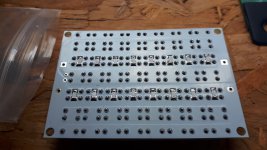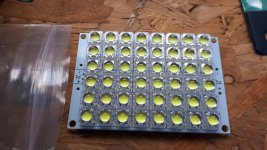- Joined
- Jan 5, 2019
- Messages
- 353
- Points
- 159
The glove box of the 500 is a dark hole, unfortunately. So I decided to let there be light.
Since I´m lazy, this is a very simple quick and dirty solution but works fine.
Cheapo (10 pieces for a fiver) Chinese wardrobe / cupboard lights that are made to be mounted on the hinge and are powered by a small 12V battery (A23).

Mounted with one of the screws that hold the bracket for the glove box lock

And this is what it looks like in operation:

The idea was born from the cupboard lights I fitted to the clothes compartments of my campervan. There, the lights are wired to the car´s 12V supply. In the 500, I will give it a try and see how long the battery lasts. As long as there is no need (and warranty is still on), I won´t take things apart just to get hold of a 12V wire. When the opportunity arises, I will connect to the car´s supply, of course...
Since I´m lazy, this is a very simple quick and dirty solution but works fine.
Cheapo (10 pieces for a fiver) Chinese wardrobe / cupboard lights that are made to be mounted on the hinge and are powered by a small 12V battery (A23).

Mounted with one of the screws that hold the bracket for the glove box lock

And this is what it looks like in operation:

The idea was born from the cupboard lights I fitted to the clothes compartments of my campervan. There, the lights are wired to the car´s 12V supply. In the 500, I will give it a try and see how long the battery lasts. As long as there is no need (and warranty is still on), I won´t take things apart just to get hold of a 12V wire. When the opportunity arises, I will connect to the car´s supply, of course...



